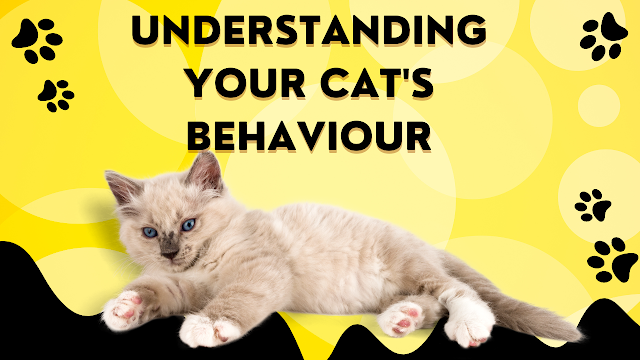Understanding your cat's behavior
Cats are known for their independence, but their behavior can provide valuable clues about their emotional and physical well-being.
 |
| Understanding your cat's behavior |
As cat owners, it's essential to be observant of any changes in their behavior, as these deviations from their baseline can indicate underlying distress, boredom, illness, injury, stress, or fear.
Indicators of Potential Issues in Cats
Stress and fear can
manifest in several behavioral changes in cats. These include:
· Increased self-grooming
· Hiding behavior
· Sleeping in a hunched position
· Alterations in feeding and litter box habits
· Indoor spraying
Pain or fear can also trigger the following behaviors:
· Development of new and potentially aggressive behaviors
· Disappearance or avoidance of human interaction
If any of these signs
become chronic, consulting a veterinarian or a certified animal behaviorist is
highly recommended.
Strategies for Promoting Feline Happiness
By implementing the
following strategies, you can significantly contribute to your cat's happiness
and well-being, thereby reducing the risk of problematic behaviors:
· Environmental Accessibility: Ensure your cat has unobstructed access to essential resources like their bed, water bowl, litter box, and potential outdoor access points. This minimizes the need to navigate around potentially frightening stimuli such as other animals or objects.
· Provision of Hiding Spots: A frightened cat lacking a safe haven may resort to aggression. Provide readily available hiding spots where they can retreat if feeling overwhelmed.
· Promoting Activity: While cats are known for their sleep propensity, they also require opportunities for exercise during their waking hours. If they are indoor cats, provide stimulating activities to keep them engaged.
· Scratching Post Enrichment: Scratching serves multiple purposes for cats, including territory marking, muscle strengthening, and claw sharpening. Offer sturdy scratching posts that are tall enough for full-body stretches, particularly important for indoor felines.
· Interactive Play: Play is crucial for a cat's physical and mental well-being. Provide safe toys and regular opportunities for independent and interactive play. Puzzle feeders or hiding treats around the house can keep them mentally stimulated during mealtimes.
· Positive Reinforcement: Always prioritize positive reinforcement techniques. Punishment is often counterproductive and can exacerbate anxiety or fear in cats.
Preventing Predatory Behavior
While hunting is an
inherent instinct in cats, domestic felines can pose a significant threat to
local wildlife populations. Here are some recommendations to deter your cat
from hunting wildlife and protect the local ecosystem:
· Restrict Outdoor Access During Peak Activity Periods: Keep your cat indoors during dawn and dusk, which are peak activity times for many wildlife species. A minimum of one hour before sunset and one hour after sunrise is recommended.
· Confine Cats After Inclement Weather: Following periods of bad weather, such as rain showers, consider keeping your cat indoors to allow birds and other wildlife to safely emerge and forage.
· Utilize a Safety Collar with Bell: Attach a bell to a breakaway safety collar worn by your cat. This can alert nearby wildlife to your cat's presence.
For more comprehensive
information on feline health and well-being, refer to our guide on cat care.
